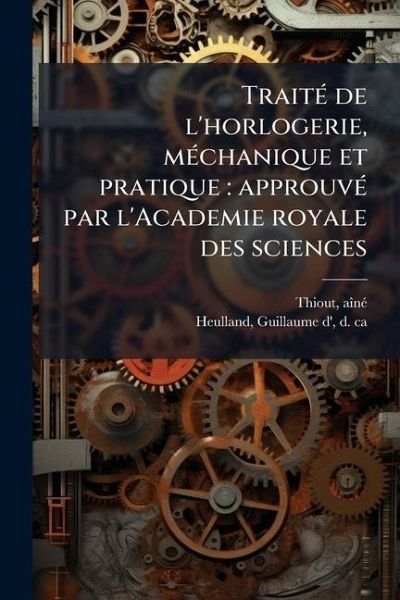
TraitÃ(c) de l'horlogerie, mÃ(c)chanique et pratique
approuvÃ(c) par l'Academie royale des sciences

PAYBACK Punkte
11 °P sammeln!
Traité de l'horlogerie, mécanique et pratique is a comprehensive treatise on the art and science of clock and watchmaking, approved by the Royal Academy of Sciences. Authored by Antoine Thiout and Guillaume d'Heulland, this volume from 1740 delves into the mechanical principles and practical techniques essential to horology. This detailed guide provides invaluable insights into the construction, repair, and maintenance of timekeeping devices during the 18th century. A crucial resource for historians, collectors, and enthusiasts of mechanical arts, 'Traité de l'horlogerie' remains a testamen...
Traité de l'horlogerie, mécanique et pratique is a comprehensive treatise on the art and science of clock and watchmaking, approved by the Royal Academy of Sciences. Authored by Antoine Thiout and Guillaume d'Heulland, this volume from 1740 delves into the mechanical principles and practical techniques essential to horology. This detailed guide provides invaluable insights into the construction, repair, and maintenance of timekeeping devices during the 18th century. A crucial resource for historians, collectors, and enthusiasts of mechanical arts, 'Traité de l'horlogerie' remains a testament to the ingenuity and craftsmanship of early clockmakers. This work has been selected by scholars as being culturally important, and is part of the knowledge base of civilization as we know it. This work was reproduced from the original artifact, and remains as true to the original work as possible. Therefore, you will see the original copyright references, library stamps (as most of these works have been housed in our most important libraries around the world), and other notations in the work. This work is in the public domain in the United States of America, and possibly other nations. Within the United States, you may freely copy and distribute this work, as no entity (individual or corporate) has a copyright on the body of the work. As a reproduction of a historical artifact, this work may contain missing or blurred pages, poor pictures, errant marks, etc. Scholars believe, and we concur, that this work is important enough to be preserved, reproduced, and made generally available to the public. We appreciate your support of the preservation process, and thank you for being an important part of keeping this knowledge alive and relevant.


